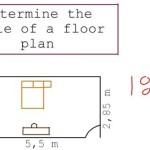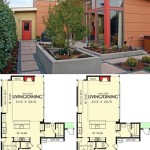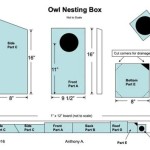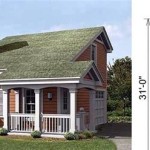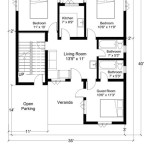Outhouse Plan: A Comprehensive Guide
The outhouse, also known as a privy or latrine, has served as a fundamental sanitation solution for centuries, particularly in areas lacking access to modern plumbing. While often perceived as a relic of the past, the outhouse remains a viable and sometimes necessary option for rural properties, camping sites, and off-grid living arrangements. This guide provides a comprehensive overview of outhouse plans, covering essential considerations, common designs, construction techniques, and maintenance practices to ensure functionality, hygiene, and environmental responsibility.
Choosing an appropriate outhouse plan requires careful consideration of several factors. The number of users, frequency of use, climate conditions, local building codes, soil composition, and available resources all influence the design and construction process. Ignoring these aspects can result in an inadequate, unsanitary, or even illegal structure. Therefore, thorough planning and research are paramount before commencing any outhouse construction project.
Key Point 1: Evaluating Site Conditions and Regulatory Requirements
Before selecting an outhouse plan, a comprehensive evaluation of the intended site is crucial. This evaluation should encompass several critical aspects. Soil type significantly impacts drainage and waste decomposition. Sandy soils provide good drainage, while clay soils can impede water flow, potentially leading to unsanitary conditions. A percolation test, which measures the rate at which water drains through the soil, can help determine soil suitability.
The water table level is another important consideration. The bottom of the pit or holding tank should be well above the highest anticipated water table level to prevent contamination. Furthermore, the proximity to wells, streams, and other water sources must be carefully assessed to prevent any potential pollution. Local regulations typically stipulate minimum setback distances from these water bodies.
Building codes and permits also play a significant role. Most jurisdictions have specific regulations regarding the construction and placement of outhouses, addressing issues such as pit depth, ventilation requirements, and accessibility standards. Failure to comply with these regulations can result in fines or the need to dismantle the structure. Therefore, it is imperative to consult with local authorities to obtain the necessary permits and ensure adherence to all applicable codes.
Accessibility considerations are also important, particularly for users with mobility limitations. Ramps, wider doorways, and grab bars can enhance accessibility and ensure that the outhouse is usable by individuals of all abilities. The location of the outhouse should be convenient and easily accessible from the main dwelling or campsite, minimizing travel distance, especially during inclement weather.
Key Point 2: Common Outhouse Designs and Construction Methods
Several outhouse designs cater to different needs and preferences. The most basic design is the single-seater outhouse with a simple pit dug into the ground. This design is cost-effective and relatively easy to construct, but it requires periodic emptying and may not be suitable for areas with high water tables. A more advanced design is the double-seater outhouse, which accommodates two users simultaneously. This option is ideal for families or campsites with higher usage demands.
The composting outhouse is an environmentally friendly alternative that uses natural decomposition processes to break down waste. This design typically involves a container or chamber beneath the seat where organic material, such as sawdust or wood chips, is added to facilitate decomposition. Composting outhouses require less frequent emptying and produce a nutrient-rich compost that can be used for non-edible plants after a sufficient curing period.
The raised outhouse design is suitable for areas with high water tables or rocky soil conditions. This design involves constructing a platform above ground level and placing a holding tank or composting chamber beneath the platform. The raised design provides better drainage and prevents groundwater contamination. Alternatively, a vault toilet, which contains a sealed, impermeable container, can be employed for waste collection.
Regardless of the chosen design, proper construction techniques are essential. The foundation should be stable and level to ensure the structural integrity of the outhouse. Wood framing is a common construction method, using pressure-treated lumber to resist rot and insect damage. The walls and roof should be adequately insulated to provide thermal comfort during cold weather and to minimize odors. Ventilation is crucial to remove moisture and odors, typically achieved through a vent pipe extending from the pit or chamber to above the roofline.
The seat should be constructed from durable and easy-to-clean materials, such as plastic or wood. A hinged lid helps to contain odors and prevent insects from entering the outhouse. Adequate lighting is essential, especially for nighttime use. Solar-powered lights or battery-operated lanterns provide a convenient and environmentally friendly lighting solution. Safety features, such as handrails and non-slip flooring, should be incorporated to prevent accidents.
Key Point 3: Maintenance and Hygiene Practices for Outhouses
Regular maintenance is crucial to ensure the longevity, hygiene, and proper functioning of an outhouse. The frequency of maintenance depends on the usage level and the type of outhouse design. For pit outhouses, regular emptying is necessary to prevent the pit from overflowing. The waste should be disposed of according to local regulations, typically involving burial in a designated area away from water sources.
Composting outhouses require regular addition of organic material, such as sawdust or wood chips, to maintain the proper carbon-to-nitrogen ratio for decomposition. The compost should be turned periodically to aerate the mixture and promote decomposition. The resulting compost should be cured for at least one year before being used as fertilizer. Vault toilets require periodic pumping to remove accumulated waste. The waste should be transported to a wastewater treatment facility for proper disposal.
Hygiene practices are essential to prevent the spread of disease. Handwashing facilities, such as a water container, soap, and paper towels, should be provided inside or near the outhouse. Hand sanitizer can be used as an alternative when water is not available. Regular cleaning of the seat and surrounding surfaces with a disinfectant solution is recommended to kill germs and bacteria. Odor control measures, such as adding lime or baking soda to the pit or chamber, can help to minimize unpleasant smells.
Proper ventilation is crucial to prevent the build-up of noxious gases. The vent pipe should be kept clear of obstructions, such as bird nests or debris. Regular inspection of the outhouse for signs of damage or deterioration is recommended. Any necessary repairs should be made promptly to prevent further damage and to maintain the structural integrity of the outhouse. Prevention of insect infestations is also important for user comfort. Using screens on windows and doors, or employing safe insecticides can discourage unwanted inhabitants.
The selection and implementation of an outhouse plan involves careful consideration of site conditions, regulatory requirements, design options, construction methods, and maintenance practices. Adhering to these guidelines promotes a functional, sanitary, and environmentally responsible sanitation solution for areas lacking modern plumbing infrastructure.

How To Draw A House Plan Step By Comprehensive Guide Where Civil Engineering And Architecture Converge

Floor Plan Symbols A Comprehensive Guide To Reading Your House Plans

A Comprehensive Guide To 4 Room Bto Floor Plan

Your Ultimate Guide To The Best Floor Plan

Autocad Plans Free Of House A Comprehensive Guide Floor How To Plan

The Guide To Building Your Dream Home

Your Ultimate Guide To Choosing The Best Casita Floor Plans Acton Adu

How To Build Your Barndominium Floor Plan The Comprehensive Guide Barndo House And A New Trend In Housing Paperback Black Stone Book Cultural Center

House Plan Design Floor Plans Free Naksha

Comprehensive Guide And Ilration By 07sketches Engineering Discoveries House Design Pictures Floor Home Plans
Related Posts

